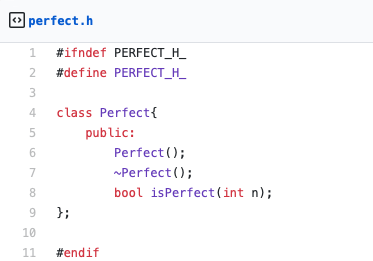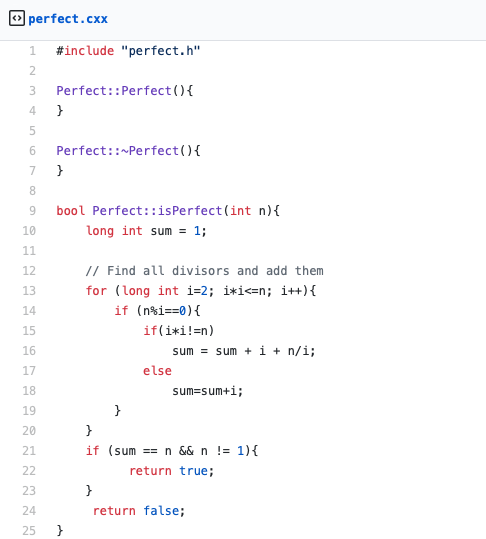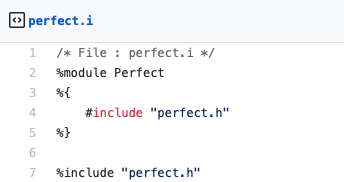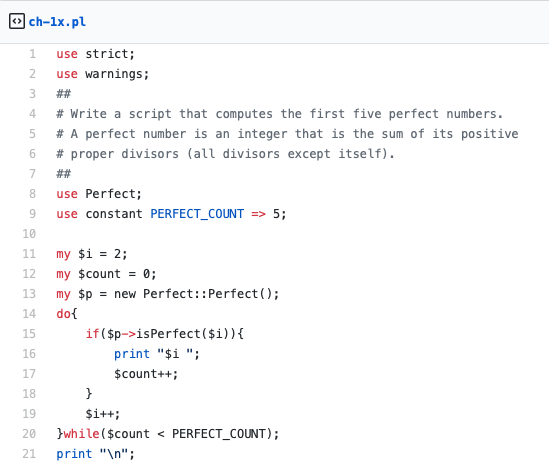RabbitFarm
2019-05-16
Integrating C++ and Perl with SWIG
In another article I mentioned that it's possible to call code written in C++ from Perl. Perl offers two ways to do that:
- Perl's XS (eXternal Subroutines)
- SWIG
Here SWIG will be used. I like SWIG better than XS because it is somewhat more straightforward to integrate with C++ (XS is much more C-centric) and also because the steps necessary to wrap C++ code for use by Perl can be readily modified to work with other languages whereas XS will only let you integrate with Perl. In other words, if you have a significant C++ library that you would like to make available to a variety of programming languages SWIG is your best bet!
This came up when discussing the solution to one of the Perl Weekly Challenges in which the problem was to computer Perfect Numbers. The issue is that Perfect Numbers occur very sparsely and a brute force method to find them when written in even a fast interpreted language such as Perl will take a long time as it searches through many millions of numbers. The preferred solution to speeding up that computation is to use a little mathematical sophistication and use one of the several well known methods for computing Perfect Numbers directly. Algorithmic improvements lead to the greatest performance gains.
Often times, however, in practice a significant algorithmic improvement is not forthcoming or the time to spend researching it is disallowed by, say, project schedules. In these cases what we may want to do is write the computationally intensive parts of the code in a compiled language such as C++ and call it from our Perl code. This will allow the use of Perl to more rapidly develop the system as a whole while, as needed, certain parts are re-written in a way that improve overall performance.
The original code is shown in the previous article. That script, written only in Perl took nearly four and half hours to find the first five Perfect Numbers.
$ time perl perl5/ch-1.pl
6 28 496 8128 33550336
real 257m33.621s
user 255m52.169s
sys 0m24.603s
Let's see what speedup we get from re-implementing the most computationally intense parts of the code in C++.
Overview
First be sure to install swig! Otherwise it's assumed you already have a C++ compiler and Perl installation.
I am using OS X 10.14 "Mojave" with perlbrew installation of perl-5.28. I use macports and have installed gcc9.
The swig installation is done in two parts:
$ port install swig
$ port install swig-perl
Other systems, such as Linux, will have similarly named packages available.
I am using swig 3.0.12. swig 4.0 was released a few weeks prior to this writing but is not yet available on macports. That is fine, none of the latest features are necessary.
Also, I will save the extra issues related to creating a distributable module (e.g. suitable for uploading to CPAN) for a later article.
Required Project Files
- The C++ header (perfect.h)
- The C++ implementation (perfect.cxx)
- The SWIG interface file (perfect.i)
- The perl script (ch-1x.pl)
- A MakeMaker file (Makefile.PL) [somewhat optional but highly recommended]
- All the above files are linked to GitHub if you'd like to download the code.
- Other files will be generated by swig but these are the ones that we must create.
Building (the easier way)
- swig -c++ -perl perfect.i generates perfect.pm and perfect_wrap.cxx. perfect.pm is the Perl side of your new module. perfect_wrap.cxx is, as the name implies, the native wrapper side of your module. Both of these files are generated based on what you've put into your interface file (e.g. perfect.i). If you want to modify these files do so by changing your interface file!
- make Makefile.PL this will create a Makefile. This step is optional in the sense that you can definitely compile and link everything yourself but MakeMaker does some nice extra stuff, such as create all the necessary perl packaging files. It's amazing how convenient this is!
- make assuming you ran the command in the previous step this will compile and link the C++ code to a dynamic library as well as package it. At this point you might consider yourself done.
- make install this will install your new module in a location that Perl can easily find it for your use. This is definitely optional. While still developing your module you'll likely want to leave it in a local directory for testing.
Note that we didn't create any tests in this basic use case. That should be something you add in later and when you do be sure to run a make test before you install to make sure everything is OK.
Also, none of the above is concerned with distribution of your module. To do so requires a little more packaging which we will discuss later. For now we are focussing on building everything up to a usable state for a single developer.
Running
After going through all the above you will have a directory that looks something like this.
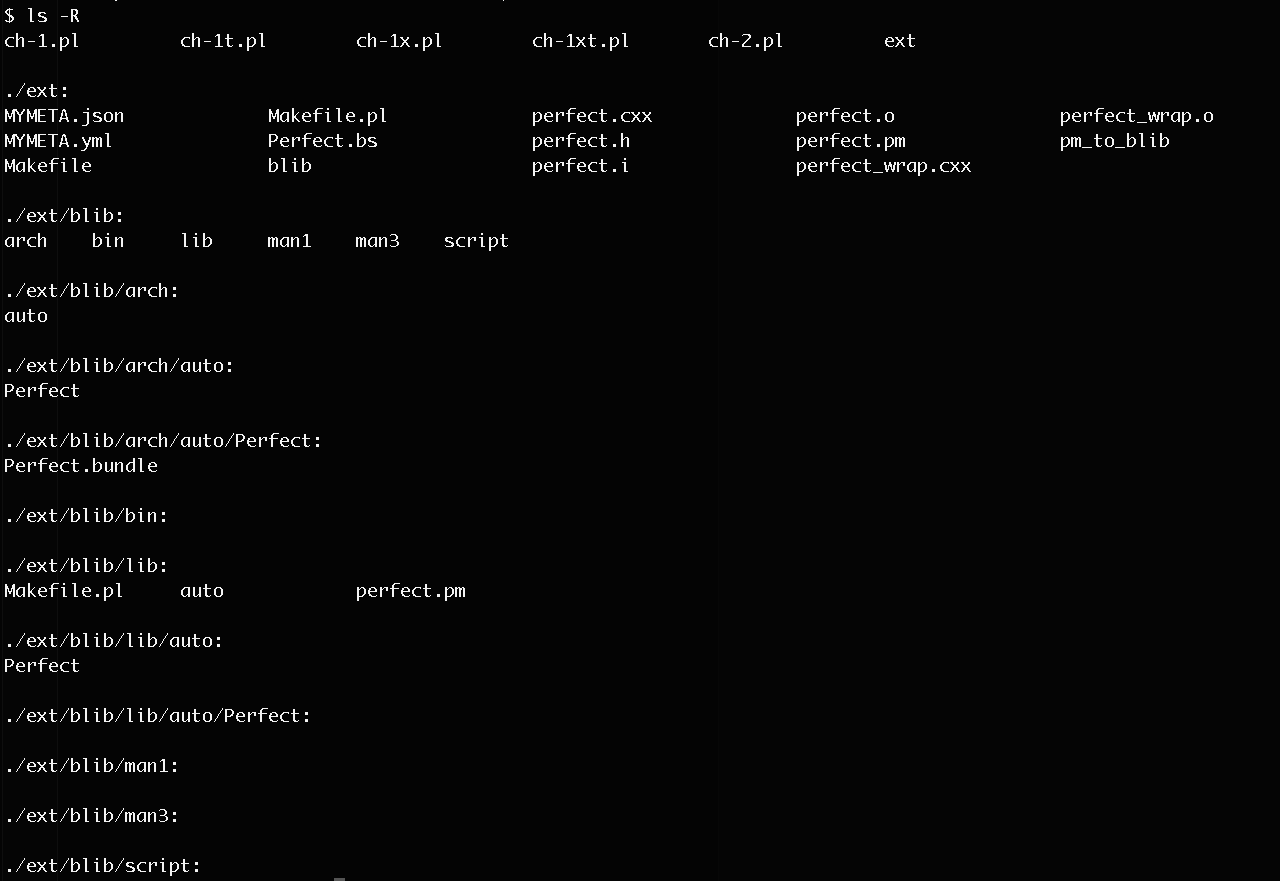
MakeMaker did us quite a favor in creating several additional files and directories. To run the script ch-1x.pl from within this directory you would execute as shown next. The -I arguments are necessary to tell perl where to find the perfect.pm (Perl module) and perfect.dylib (OS X dynamically linked library) files.
Sample Run
perl -I. -Iblib/arch/auto/Perfect ch-1x.pl
6 28 496 8128 33550336
That seemed to run quicker. But I wasn't watching closely. What does time tell us?
time perl -I. -Iblib/arch/auto/Perfect ch-1x.pl
6 28 496 8128 33550336
real 19m31.171s
user 19m24.311s
sys 0m2.196s
That's great! That is about 14x faster than the pure Perl version! Again, for this particular problem this is not the method for getting the absolute best performance but it definitely shows that some great performance gains can be achieved by re-writing computationally intensive parts of your system in C++ vs plain Perl.
Details
Let's take a deeper look at what we did, starting by examine the files required for this project.
Required Project Files
- The C++ header (perfect.h)
We are declaring a pretty basic class. A constructor, destructor, and single method isPerfect().
- The C++ implementation (perfect.cxx)
We don't do much with the constructor or destructor, the code is really all in the isPerfect() method which is a very close translation of the previous pure Perl program.
- The SWIG interface file (perfect.i)
The syntax of the interface files is a little unusual but this is small enough to not be too confusing. We declare that we are creating a module called Perfect. According to the swig docs The %{ %} block provides a location for inserting additional code, such as C header files or additional C declarations, into the generated C wrapper code. So that is why we need to include our header file perfect.h there, so it gets included in the generated perfect_wrap.cxx file. The seeming duplicate mentioning of perfect.h in the line %include "perfect.h" is not actually redundant. The %{%} block includes that header in the wrapper but what comes later is what is parsed by swig to actually generate the wrappers. In this smaller example they appear redundant but in larger more complex examples the different sections of the interface file become more distinct.
- The perl script (ch-1x.pl)
Here we actually get to put all our work to use! Notice how we use Perfect; and declare and use a Perfect object.
- A MakeMaker file (Makefile.PL) [somewhat optional but highly recommended]
The contents of this file are small, just state your module name and the object files output by the compilation step and you should be good to go.
This is "optional" because it is possible execute the commands to build and link everything yourself, either in a Makefile you write or just executing the right commands in sequence. By using MakeMaker you get all the extra packaging files such as the blob directory and meta files with no extra effort. You also get the ability to easily install the new module on your system. By using MakeMaker you are probably 80% of the way to having created a distributable module, suitable for inclusion on CPAN.
For the sake of completeness and a slightly fuller understanding here is what doing the build manually looks like ...
Building (the harder way)
$ swig -c++ -perl perfect.i
$ g++ -c perfect.cxx perfect_wrap.cxx `/Users/adamcrussell/perl5/perlbrew/perls/perl-5.28.0/bin/perl -MExtUtils::Embed -e ccopts`
$ g++ -dynamiclib -single_module -flat_namespace -undefined suppress -o perfect.dylib perfect.o perfect_wrap.o -L /Users/adamcrussell/perl5/perlbrew/perls/perl-5.28.0/lib/5.28.0/darwin-thread-multi-2level/CORE/ -lperl
Sample Run
$ perl -I. -MPerfect -e 'my $p=new Perfect::Perfect();print $p->isPerfect(6);'
1
Just what we hoped for, a true value returned. We can now confidently run ch-1x.pl as we did before.
We use the -I. to make sure that the interpreter sees perfect.pm and perfect.dylib in the current directory. If they occur in other locations than be sure to specify that with -I. In earlier examples you may have seen -Iblib/arch/auto/Perfect for this same reason.
Clearly this was done on a Mac OS X system and is very specific to my particular configuration with perlbrew. You'll need to adjust accordingly. In particular on Linux systems, not using perlbrew, for example your last line might look more like
g++ -shared perfect.o perfect_wrap.o -L /usr/lib/ -lperl -o perfect.so
Summary
This article has shown the construction of a Perl module with portions written in C++ and integrated with SWIG. The example module is small and straightforward but demonstrates the main capabilities of SWIG. More complexity comes into play when using advanced C++ features such as templates and nested namespaces, however SWIG is able to handle these well and the integration of more advanced C++ code and Perl may be the subject of a future article.
posted at: 19:36 by: Adam Russell | path: /perl | permanent link to this entry
